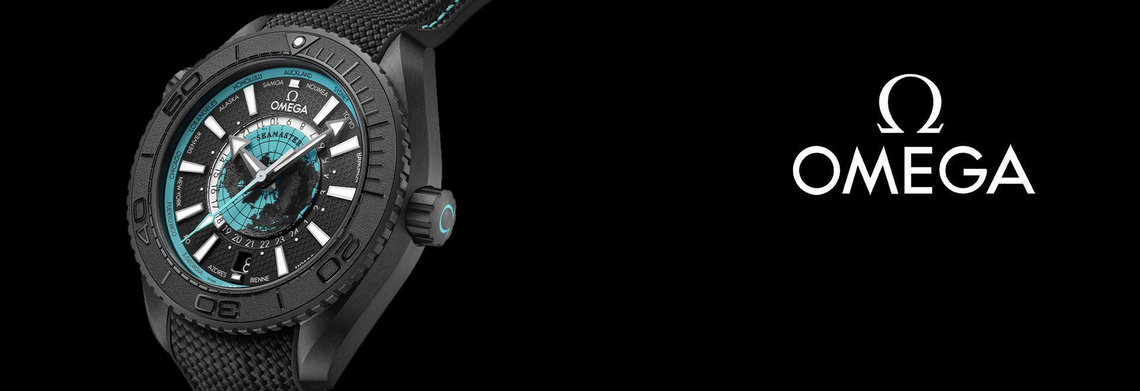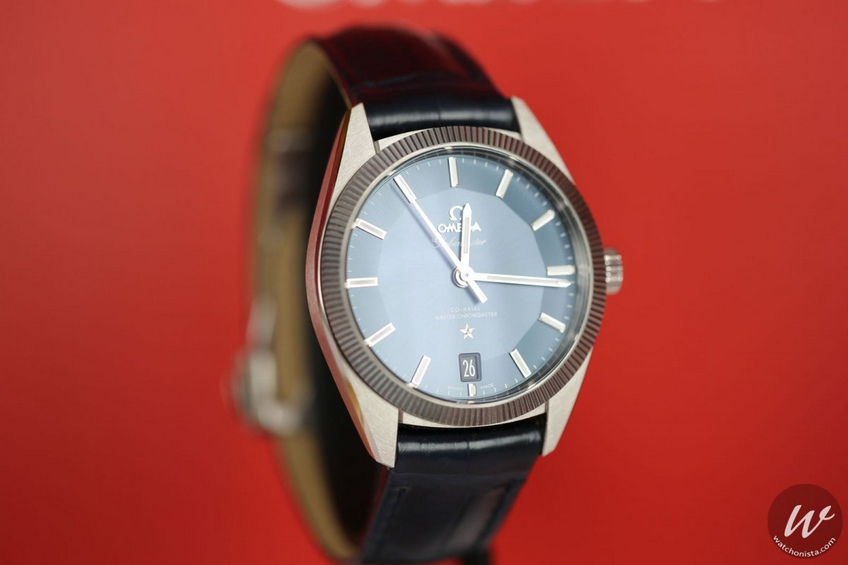

Omega’s Globemaster: revolutionary progress
Those who are well versed in chronometry unanimously agree that Omega’s progress with the “Globemaster file” is absolutely fantastic and revolutionary. It is indeed a huge step forward.
This may be stating the obvious, but there’s no harm in reminding ourselves that Omega is an international brand. That means that the company does not only produce its own movements but it also carries out advanced research to improve the quality, reliability and sustainability of its creations. Consequently, the Bienne-based maison has recently implemented a new timepiece certification process in collaboration with the “Institut Fédéral de Métrologie” (METAS) that comes into effect this year.
And whilst it was at it, Omega introduced the Globemaster at BaselWorld 2015. The timepiece is equipped with the brand’s most developed mechanical movement. The design drew its inspiration from the brand’s early Constellation models, which demonstrate the watchmaking skills as well as the long history of precision and achievements that make the brand stand out.

Before obtaining certification, each watch has to go through a series of individual tests in a brand-new process that has established new quality standards for the watchmaking industry.
The first “Master Chronometer”
The Globemaster is the first watch to be subjected to the new tests. These measure timepieces’ day-to-day performance as well as their functioning when exposed to high-level magnetic fields (up to 15,000 gauss).
Incidentally, any watchmaking brand can register its watches for the METAS-approved tests and receive the title of “Master Chronometer”. It certifies the quality of the mechanical movement and the watch as a whole. This just goes to show how serious Omega is in its approach. The brand made this certification available to its competitors while many others created “poinçons” (hallmarks) or certifications for their exclusive use, which actually renders them completely useless.
Certain steps need to be followed during the certification process. Here we shall present six of them. The first one is the function of the movement during exposure to a magnetic field of 15,000 gauss. The second step refers to the deviations in the running time of the watch between 0 and 2/3 power reserve. The third is the deviation of the average daily precision of the watch after exposure to a 15,000-gauss magnetic field. The fourth one is the average daily precision of the watch in tests that replicate daily wearing conditions (six positions, two temperatures). The fifth one is the watch’s power reserve (autonomy – functioning without winding). The final and sixth step is the watch’s water resistance, which is tested in water.
Before the movement is exposed to magnetic fields and tested according to METAS-approved criteria, it must first pass the tests of the “Contrôle Officiel Suisse des Chronomètres” (COSC). Thus, clients will be given a certificate with an identification number when they buy a watch. This will inform them of their watch’s results in each test. The document is also proof that the watch is METAS-certified.
The Globemaster had to stay within tolerance ranges (between 0 and +5 seconds per day) during and after its exposure to a magnetic field of 15,000 gauss in order to be accredited Master Chronometer.
An enemy by the name of magnetism
Magnetic fields are watchmaking’s nemesis and brands have been trying to eliminate them for years. Tissot was the first to introduce an antimagnetic watch after World War I. It was equipped with a sort of “Faraday cage” that resisted magnetic fields of 1,000 gauss. This was impressive for the time and it has been so until some time ago. Omega’s experts have been striving to improve the situation for several years now.
Consequently, in parallel with the research it carried out in silicon fields and new materials, the Bienne-based brand succeeded in introducing a watch that can resist 15,000-gauss magnetic fields, which is approximately the power of the magnetic resonance device used in medicine. The most interesting thing about this capital discovery is that the tests to obtain 15,000-gauss resistance are directly carried out on the watch’s movement instead of the case. It is extraordinary.
The Globemaster will forever be known as the very first Master Chronometer, it is now available in large-range versions of either 18-K Sedna™ gold or 18-K yellow gold or stainless steel.
Historical external parts as a highlight of modernity
This 39-mm timepiece displays the iconic pie-pan dial made famous by the Constellation models in 1952. A sun-brushed blue dial graces the stainless steel and bimetallic models that come with either a metal or a blue leather strap. Silvery opaline dials are featured on the 18-K Sedna™ gold, 18-K yellow gold, stainless steel and stainless steel and 18-K yellow gold versions. A silvery opaline dial graces the full stainless steel model and comes with a grey leather strap. Both the indexes and the iconic star of the Constellation are in the 18-K Sedna™ gold or 18-K yellow gold appliques, which are either rhodium-plated or blackened depending on the metal used for the case and the dial’s color. The hands at the center of the hours, minutes and seconds are also SuperLuminova-coated as are the indexes and the hour and minute hands. The date is displayed at 6 o’clock.
Its fluted bezel with smooth ridges gives the Globemaster its unique look and makes it immediately identifiable.
The bezel of the stainless steel models is made of tungsten carbine, a hard metal. The brushed case has two polished bevels that run from the lugs to the bezel. They are also found on the metallic strap that has been made into three fully-brushed rows that are subtly polished on the rims. The central links are slightly curved and add to the sophisticated look of the watch.
An enhanced exceptional caliber
The scratch-resistant and domed sapphire crystal protects the OMEGA Co-Axial Master Chronometer 8900/8901 caliber and adds to the whole. A locket of the same material as the case was embedded in the sapphire glass before it was fixed to the case’s back with four screws. The locket is engraved with an image that represents an observatory, which is a contrast to a polished sky with eight symbolic stars. The locket does not entirely cover the oscillating mass and the movement so that the OMEGA Co-Axial Master Chronometer 8900caliber – equipped in the stainless steel, steel and gold models - or the OMEGA Co-Axial Master Chronometer 8901– equipped in the gold versions – remains visible.
The OMEGA Co-Axial Master Chronometer 8901caliber is also equipped with an 18-KSedna™ gold oscillatingmass.The reliability and precision of these two mechanical and antimagnetic movements are such that the Globemaster comes with a full four-year guarantee. The watch is also water-resistant to 10 bars (100 meters / 330 feet underwater).






